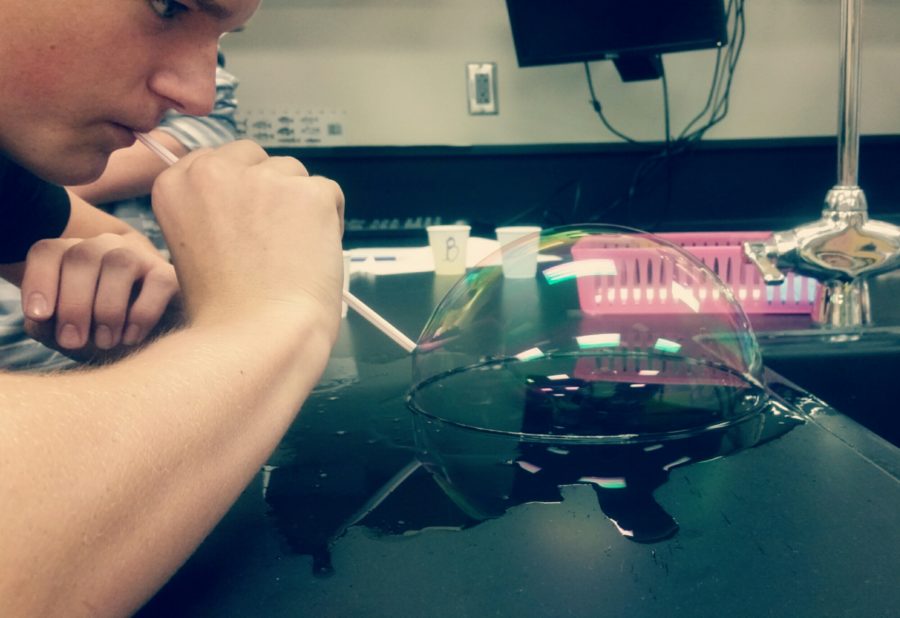Bubble-ology enthralls biology students: Photo of the Day 8/30/16
Mikey Healy blows a bubble that is 28 cm in diameter.
August 30, 2016
Washing dishes is a chore that kids come to school to get away from. They hate the persistent nagging from their parents to scrub the plates clean and the dry skin they get as a result. Yet in Ms. Valerie Riley’s Biology class, students dip their fingers back in the soapy solution and are greeted by bubbles.
They conducted the experiment to find out which brand of dish detergent, Palmolive, Joy, or Wal-mart Great Value, can be used to make the biggest bubbles. Students first formed a hypothesis based on each liquid’s ingredients, cost, and viscosity. Afterwards, they put their hypothesis to the test by conducting four trials for each liquid.
To blow the bubbles, they spread a thick layer of dish soap across the counter top and then they proceeded to place a straw into one of the small bubbles forming in the liquid. The key to making the biggest bubbles is to blow gently and slowly into the small bubble. A large bubble forms on the edge of the small bubble and the only tricky part left is maneuvering the bubble so it does not fall into the sink!
Once all of the data was collected, students assembled a bar graph of the average size of the bubbles made by each brand. In their graphs they were also required to add the data from the fictitious control group, Sudsy Sensations.

A graph displaying a group’s lab results. Students concluded that Palmolive and Wal-mart Great Value brand produced the biggest bubbles.
Students concluded that Palmolive and Wal-mart Great Value brand produced the biggest bubbles. Student Mikey Healy, a member of the Class of 2019, was surprised by the results.
“When I saw the data for the control group, I didn’t think that our bubbles would be as large as they were. In most cases, they were almost double the size of the control,” said Mikey Healy.
While the lab will not help you wash your dishes, the lab was a fun way for students to learn the scientific method.






